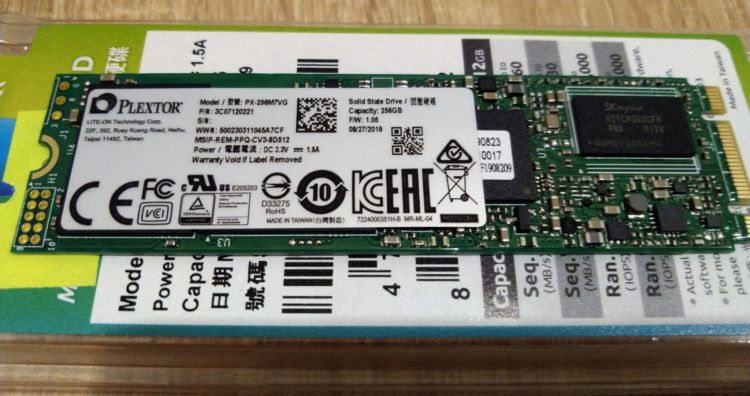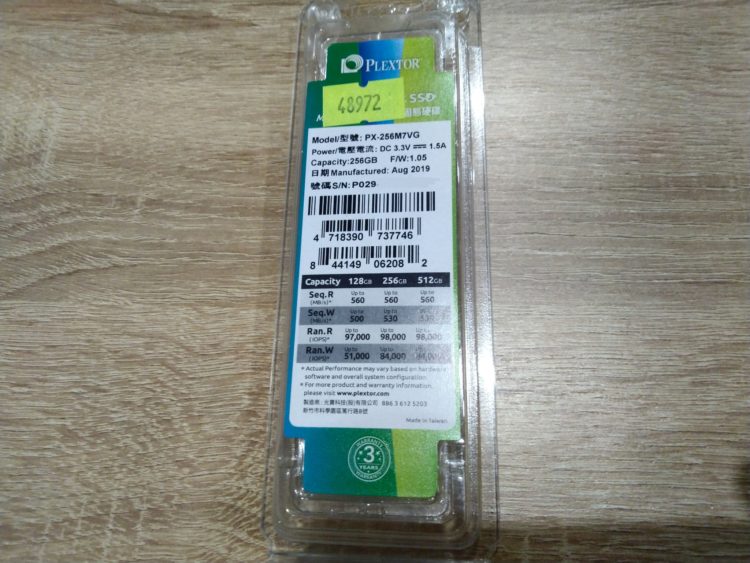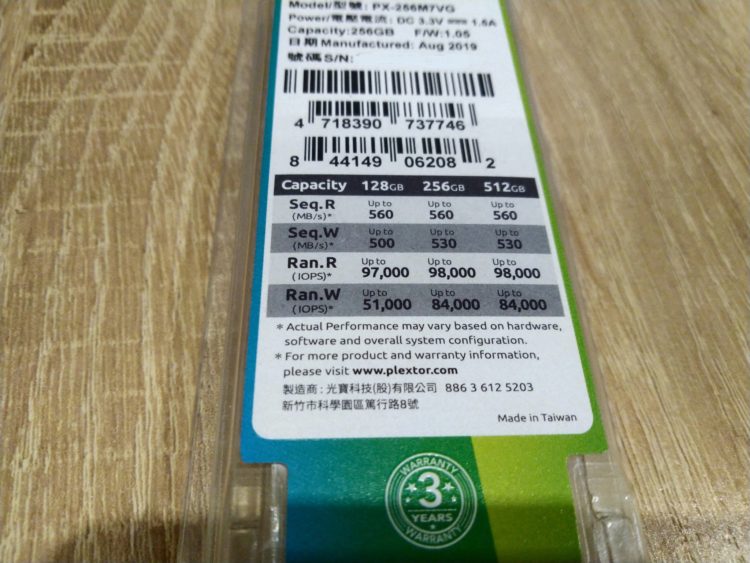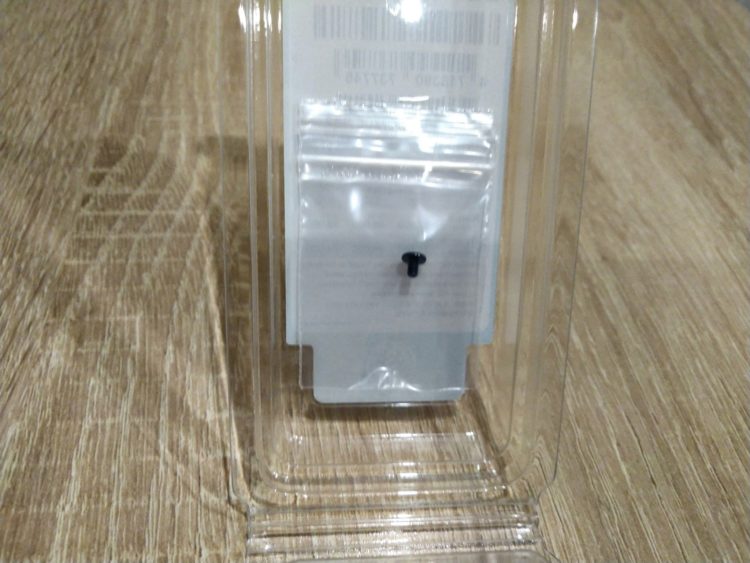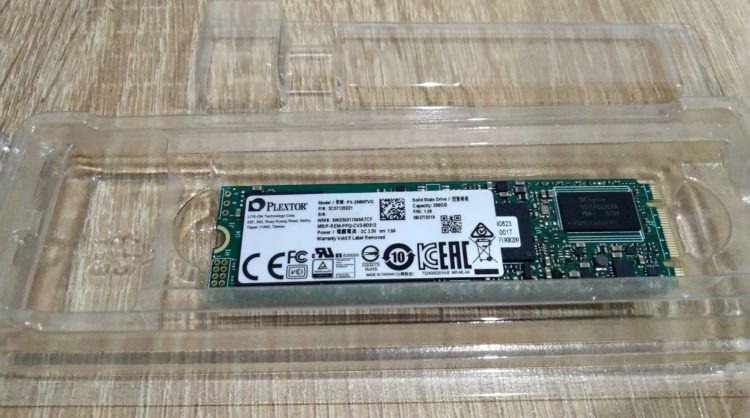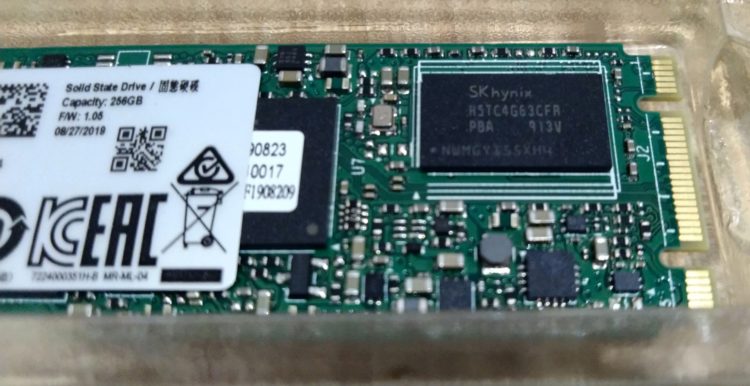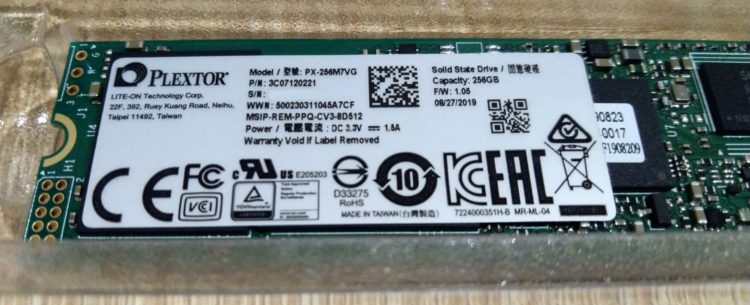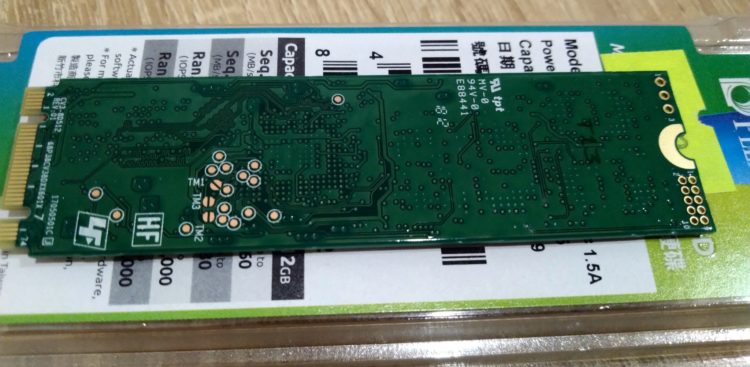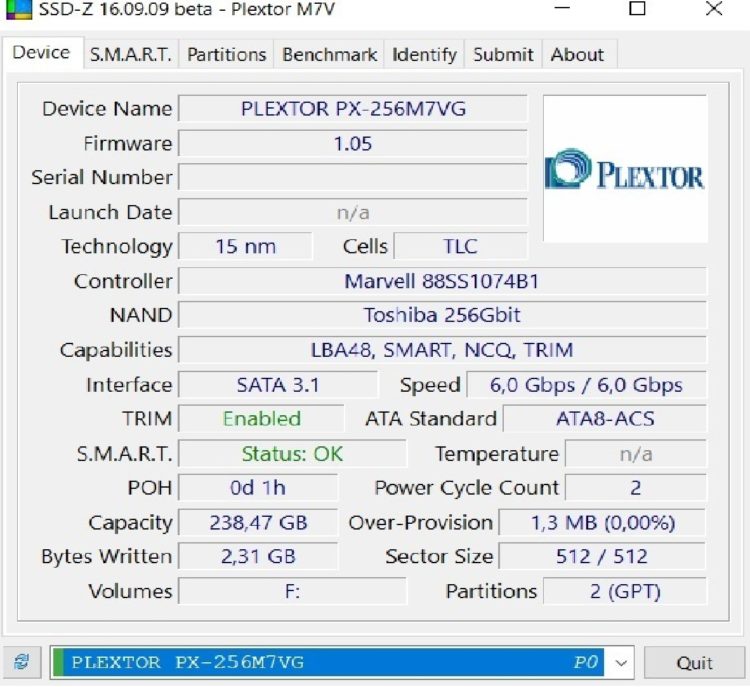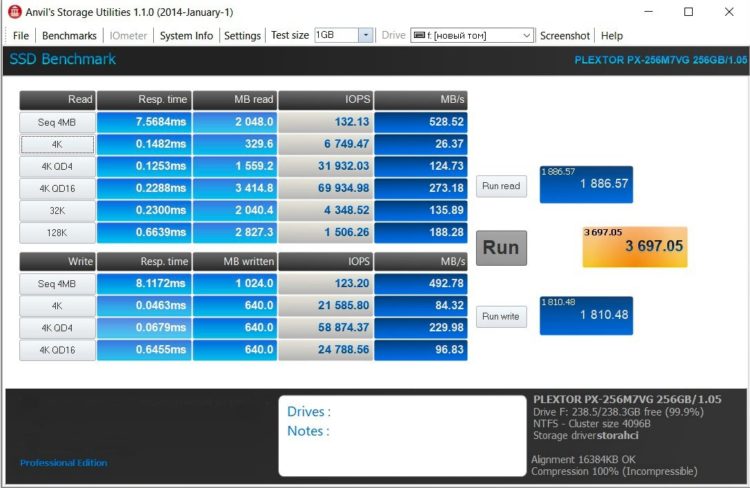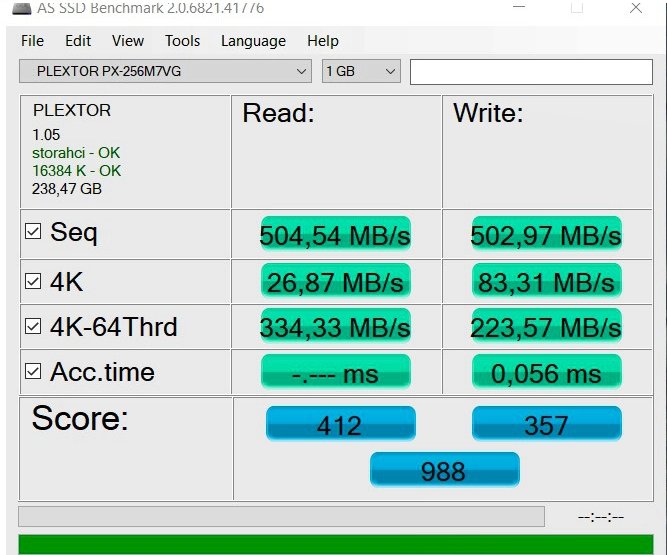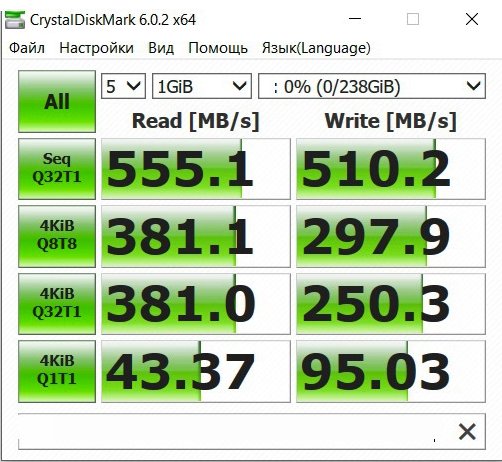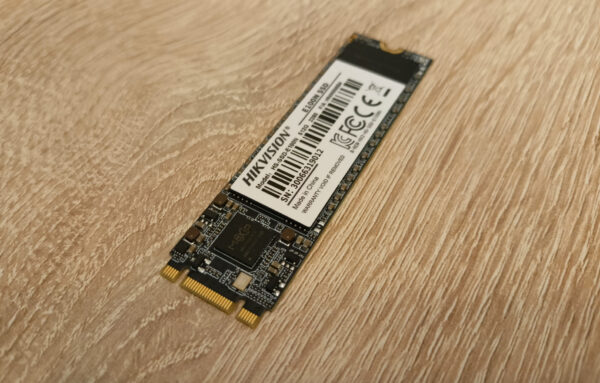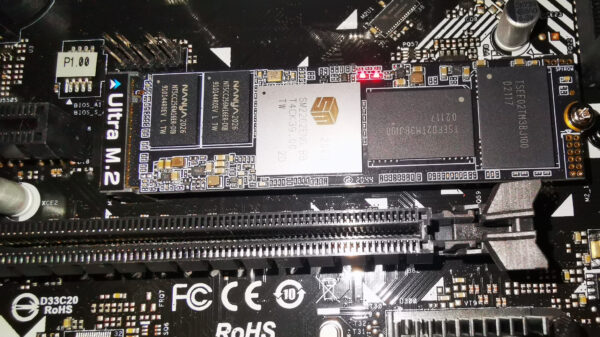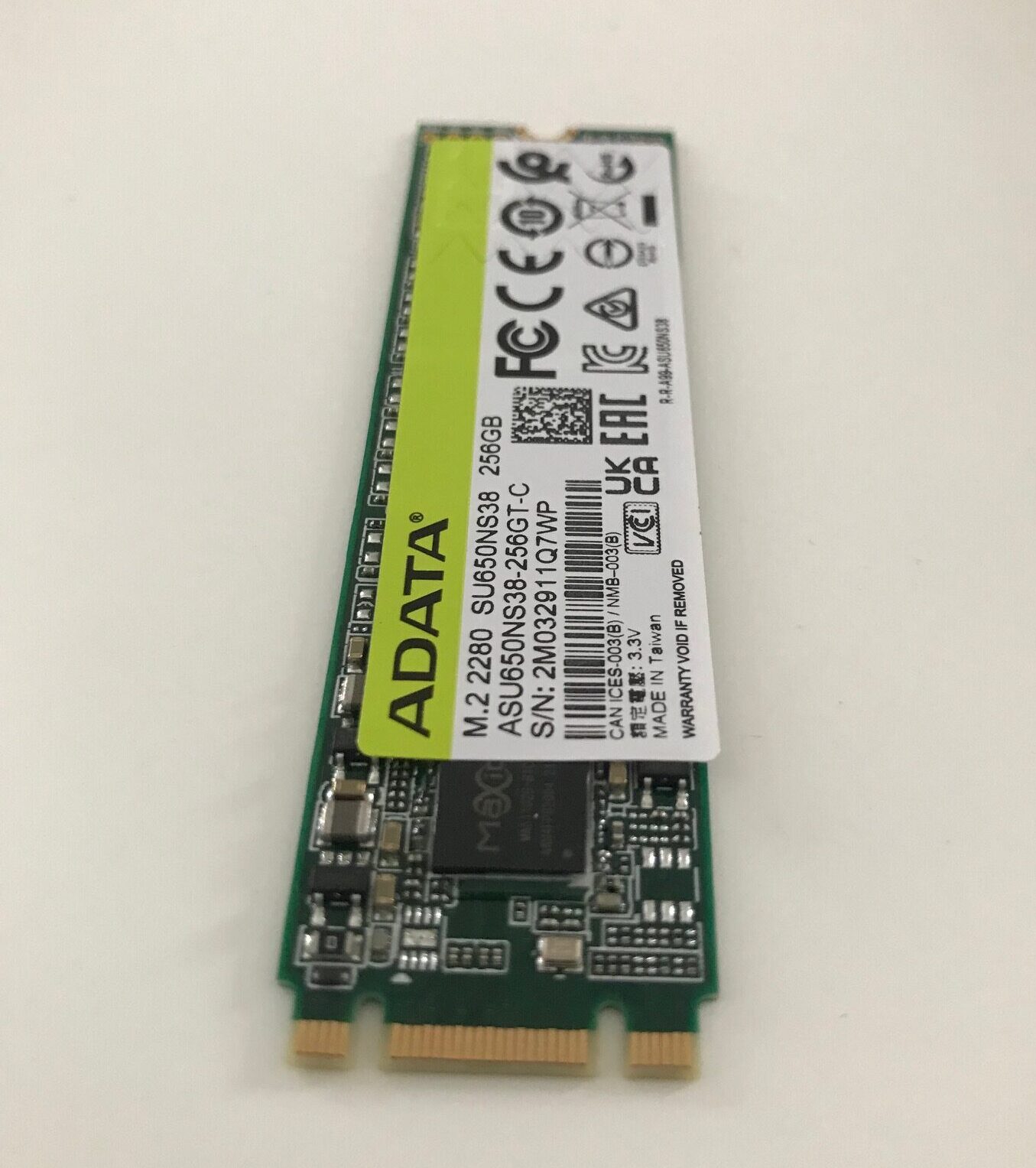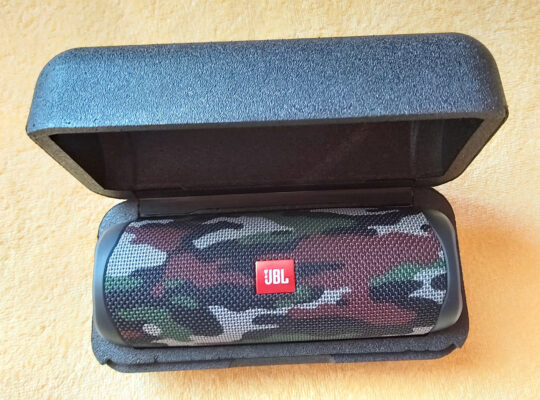SSD Plextor M.2 M7V 256GB SATA3 TLC PX-256M7VG Review
4 min readPLEXTOR is known to every computer technician. Once the release of the new Plextor SSD model was an event in the computer world. My Plextor M5 Pro on the MLC memory and the Marvell 88SS9187 controller is still alive and feels good, although it’s already a bit small, which is why it moved to an old laptop. Plextor was famous for its quality approach to creating its SSDs. Although he also had setbacks. After this brand was gradually lost among an infinite number of others. Today, manufacturers compete in price and brightness of the backlight, not quality. But we can still buy the SSD of our grandfather of the sample in 2016 (by computer standards, this is a very long time ago).
The Plextor M7VG 256 GB M.2 2280 (PX-256M7VG) comes in the usual compact plastic blister. There is no seal. Inside there is another plastic insert that secures the drive and prevents it from hanging during transportation. Includes mounting screw. Be careful, this type of screw is still not standardized and therefore use the one that comes with the motherboard better. Plextor traditionally provides maximum information on the packaging. SSD manufactured in August 2019. Yes, the model is outdated, but recently left the assembly line. This is indirectly confirmed by the latest firmware 1.05. The speed characteristics declared on the blister seem to be excellent.
The disk capacity is 256GB. Actually available space is traditionally smaller and amounts to 238GB. Part of the memory is reserved by the controller for its own needs. Toshiba flash memory is represented by two chips on which a label with information is glued. Removing it will void the warranty. Looking ahead, I will say that the SSD does not need a radiator and there is no need to remove the sticker. Chips do not overheat to temperatures that can cause problems with ssd. Type of memory TLC Toggle NAND Toshiba, made by the 15 nm process technology. This is a planar memory, not a more modern one with a 3D layout. The Marvell 88SS1074-BSW2 controller is already a kind of veteran, but it is also used in modern models, since it has balanced characteristics and has earned a good reputation. It can be found in ssd such asKingston SUV500, Western Digital BLUE 3D NAND, HyperX SHFR200. The controller can work with various types of memory. It is also known for the fact that it gently “wipes” the memory resource, which means that it provides greater durability of the drive. The buffer memory chip of the controller is represented by a chip from SK Hynix DDR3L with a capacity of 512 MB. That is, the ratio is 2: 1, which is twice as much as traditional. This is a positive point, provided that this redundancy is used by the controller. The reverse side of the board is empty, which avoids problems with installation or heating.
Plextor M7V is a drive that works according to the SATA3 standard, although it is made in the M.2 form factor. This is important to understand. In fact, this is just a regular SATA3 SSD. There are also faster M.2 NVME drives. You need to take care in advance and find out which type of drive the motherboard of your computer or laptop supports.
Disk S.M.A.R.T. is extensive. It also has the frightening point B1 – “wear”. This is just such a usage counter. Do not be afraid of him. As I said, the temperature is not displayed. I had to determine the temperature by touch, due to the lack of a pyrometer at hand. Host and NAND entries are maintained and displayed. TRIM function supported.
The SSD-Z utility shows the names of the controller and memory. I conducted runs of standard benchmarks. But I’ll say right away that they all show at such settings (1GB) show only the speed of the disk within the SLC cache, like on all other ssd. But their meaning is to determine the approximate positioning of the drive. In this particular case, I see a level close to the characteristics of such SSD as Samsung 850 Evo and Intel 545s, which I also work in various systems. Is it too presumptuous? Yes it is possible. But for now, blame the Plextor M7V, except that it is based on the old platform, I have nothing. After I spent a couple of real, in my opinion, tests and threw the folders, 15GB and 30GB in size, first to the disk, and then from it.
According to its results, I can say that the Plextor M7V SLC buffer is about 5GB, and without significant speed loss, it can record up to about 20GB of information. This is a great result. The speed characteristics of reading are at the standard level for a SATA drive. I did not use this SSD as a system one, but I did not meet it with freezes and other similar problems in the information reviews.
Total. I won’t walk around. The Plextor M7V has the usual SATA SSD specifications. He does not stand out from the crowd. This is just a high-quality and reliable SSD, on an outdated, but time-tested platform. Live long and prosper, my electronic friend!
The article is written on the basis of materials of this site.
